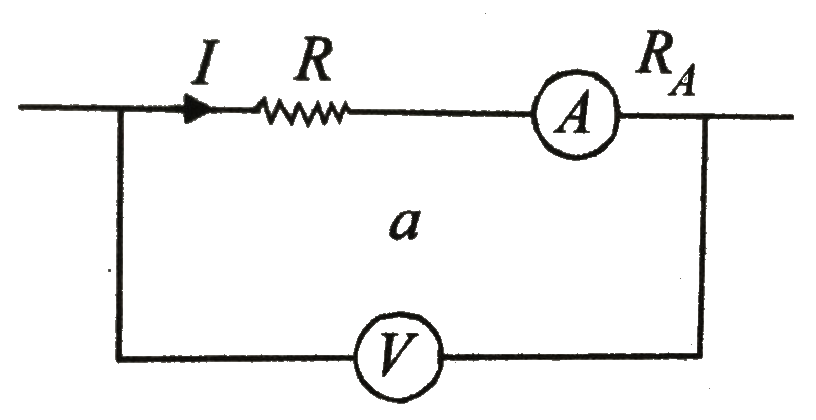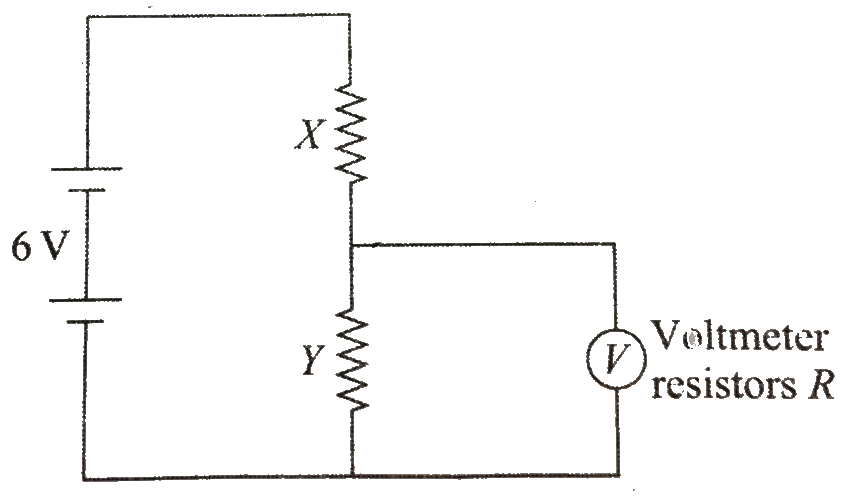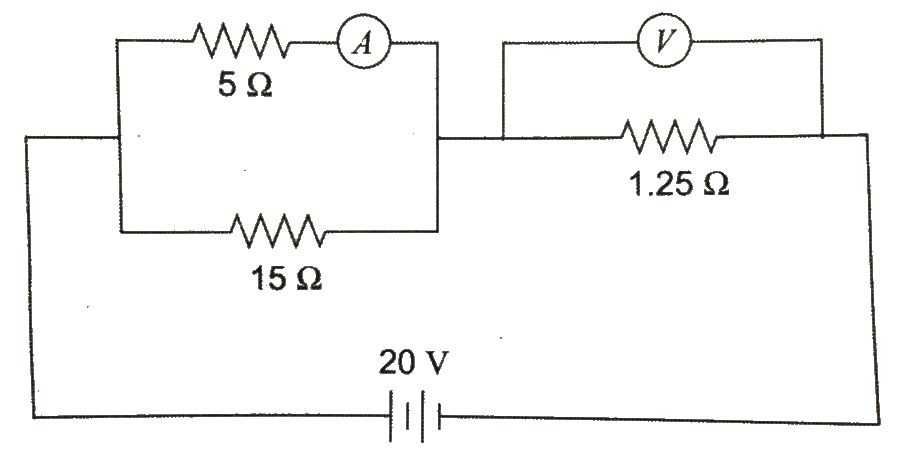You are given two resistors X and Y whose resistances are to be determined using an ammeter of resistance 0.5Ω and a voltmeter of reistance 20kΩ. It is known that x is in the range of a few ohms. While Y is in the range of several thousand ohms. In each case, while of the following two connections (Fig. 6.35) would you choose for resistance measurement? Justify your answer quantiatively. [Hint : For each connection, determine the error in resistnce measurement. The connection that corresponds to a smaller error (for a given range of resistance) is to be perferred.]
![You are given two resistors X and Y whose resistances are to be determined using an ammeter of resistance 0.5 Omega and a voltmeter of reistance 20 k Omega. It is known that x is in the range of a few ohms. While Y is in the range of several thousand ohms. In each case, while of the following two connections (Fig. 6.35) would you choose for resistance measurement? Justify your answer quantiatively. [Hint : For each connection, determine the error in resistnce measurement. The connection that corresponds to a smaller error (for a given range of resistance) is to be perferred.]](https://d10lpgp6xz60nq.cloudfront.net/physics_images/BMS_V03_C06_E01_020_Q01.png)
The correct Answer is:circuit (a) should be used to measure Y circuit (b) should be used to measure Y
Let us measure a resistance R using circuit (a) .
True value=R,
measured value =VI=R+RA
percentage error =R+RA−RR×100
=RA×100R=0.5×100R=50R

So the more the value of R, the lesser the percentage error. Hence, circuit (A) should be used to measure Y. Now, let us measure R using circuit (b).
True value =R
Measured value =VI=VIR+IV=VVR+VRV=RRVR+RV
Percentage error =R+RRVR+RVR×100=11+RV/R×100
The lesser the value of R, the lesser the percentage error. Hence,circuit (b) should be used to measure X.

Topper's Solved these Questions
- ELECTRICAL MEASURING INSTRUMENTSBook:CENGAGE PHYSICS ENGLISHChapter:ELECTRICAL MEASURING INSTRUMENTSExercise:Single Correct
Explore 94 Videos
- ELECTRICAL MEASURING INSTRUMENTSBook:CENGAGE PHYSICS ENGLISHChapter:ELECTRICAL MEASURING INSTRUMENTSExercise:Multiple Correct
Explore 7 Videos
- ELECTRICAL MEASURING INSTRUMENTSBook:CENGAGE PHYSICS ENGLISHChapter:ELECTRICAL MEASURING INSTRUMENTSExercise:Exercise 6.1
Explore 15 Videos
- ELECTRIC POTENTIALBook:CENGAGE PHYSICS ENGLISHChapter:ELECTRIC POTENTIALExercise:DPP 3.5
Explore 15 Videos
- ELECTROMAGNETIC INDUCTIONBook:CENGAGE PHYSICS ENGLISHChapter:ELECTROMAGNETIC INDUCTIONExercise:compression type
Explore 7 Videos
Similar Questions
A cell of e.m.f. 1.8 V and internal resistance 2 Ω is connected in series with an ammeter of resistance 0.7 Ω and a resistor of 4.5 Ω as shown in Fig.

What would be the reading of the ammeter ?
View SolutionA voltmeter of range 2 V and resistance 300Ω cannot be converted into ammeter of range
View Solution
Knowledge Check
The range of voltmeter of resistance 300Ω is 5 V. The resistance to be connected to convert it into an ammeter of range 5 A is
A1Ωin seriesB1Ωin parallelC0.1Ωin seriesD0.1Ωin parallel
A milliammeter of range 10mA has a coli of resistance 1Ω. To use it as an ammeter of range 1A, the required shunt must have a resistance of
View SolutionA voltmeter has resistance 2000Ω and range 5 V. For increasing its range upto 20V, a resistance of
View SolutionIn the circuit shows in Fig. 6.42, resistors X and Y, each with resistance R, are connected to a 6V battery of negligible internal resistance. A voltmeter, also of resistance R, is connected across Y.

What is the reading of the voltmeter?
View SolutionThe equivalent resistance of two resistor connected in series is 6Ω and their equivalent resistance is 43Ω. What are the values of resistances ?
View SolutionAn ideal ammeter (zero resistance) and an ideal voltmeter (infinite resistance) are connect as shows in Fig. 6.47. The ammeter and the voltmeter readings are

View SolutionA cell of e.m.f. 2V and internal resistance 1.2.Ω is connected with an ammeter of resistance 0.8Ω and two resistors of 4.5 Ω and 9Ω as shown in the diagram below:
What would be the reading on the Ammeter?
View SolutionA cell of e.m.f. 2 V and internal resistance 1.2 Ω is connected to an ammeter of resistance 0.8 Ω and two resistors of 4.5 Ω and 9 Ω as shown in Fig.
find : the potential difference across the 4.5 Ω resistor.
View Solution